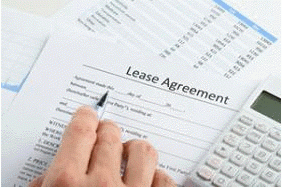
By Kimberley Crook*

The London-based International Accounting Standards Board (IASB) yesterday issued the new standard, designed to provide more transparency for investors and other stakeholders. It will fundamentally change the way companies account for leases.
The biggest change is for lessees, many of which have significant lease commitments that currently don’t appear on their balance sheets. The new standard, IFRS 16 Leases, will require most of these leases to be recorded on balance sheet.
The new standard replaces old accounting requirements, introduced more than 30 years ago, which the IASB considers to be no longer “fit for purpose”.
Globally, the IASB has calculated that listed companies using IFRS Standards, or US GAAP, have around US$3.3 trillion of lease commitments. More than 85 per cent of these don’t appear on their balance sheets.
The New Zealand numbers aren’t so dramatic but are still substantial: a rough calculation from the financial statements of 20 companies in the NZX50 indicates around $5 billion of lease commitments are currently not on their balance sheets.
This is because existing accounting requirements divide leases into two types, operating leases and finance leases, with only the finance leases recorded on the lessee’s balance sheet. Finance leases are treated as similar to the purchase of an asset (such as property, plant and equipment), with secured finance. But operating lease commitments (such as the lease of a building for five years) aren’t recorded on lessee balance sheets. Instead, they are simply disclosed in the notes to the financial statements.
The IASB decided the off-balance-sheet treatment of operating leases makes it difficult for investors and other stakeholders to get an accurate picture of a company’s lease assets and liabilities, particularly for industries such as the airline, retail and transport sectors. So it sees the new standard as bringing greater transparency, by recording most leases on balance sheet.
However, to reduce compliance costs for companies in applying the standard, the IASB has provided some exemptions: for short-term leases (with a lease term of 12 months or less) and leases of “small ticket” items (such as laptops or phones).
For leases recorded on balance sheet, the new standard also will bring changes to company income statements. For example, take a lease of a building for five years. Currently, the annual rent expense appears in the lessee’s income statement and is included in common performance measures such as “operating profit” or EBITDA (earnings before interest, tax, depreciation and amortisation).
However, under the new leases standard, this rent expense is replaced with two different expenses – interest expense (on the lease liability) and depreciation expense (on the lease asset). For some companies, this might make their reported operating profit or EBITDA figures look better. But the reported net profit after tax could be reduced in the early years of the lease.
The IASB recognises its new standard will be controversial. In a speech earlier this week to the European Parliament, Hans Hoogervorst, Chair of the IASB, said:
“This change is expected to affect roughly half of all listed companies and will not be popular with everyone. Accounting changes are often controversial and can be met with warnings of adverse economic effects and costs of system changes. The IASB has looked at all these possible risks very carefully…Our conclusion is that the risks and costs of the new Leases Standard are manageable. First of all, IFRS 16 will not put the leasing industry out of business. Leases will remain attractive as a flexible source of finance. It will remain appealing to companies to lease assets so that they do not bear the risks of owning them. While the cosmetic accounting benefits of leasing will disappear, the real business benefits of leasing will not change as a result of the new Standard. We do not deny there will be costs involved in updating systems to implement the new Leases Standard, but we have done our best to keep these costs to a minimum….”
Given the potentially significant changes to lessee balance sheets and income statements, companies must to be ready to explain those changes to investors and other stakeholders when the standard becomes effective.
In addition, changes to company financial statements can have wider commercial effects. For example, banking covenants and other contractual arrangements that are tied to the company’s financial statements (eg debt to equity ratios in banking covenants and profit targets in employee bonus pay arrangements) might need to be revised before the standard becomes effective.
So while the mandatory date for applying the new standard is several years away, it will be important for lessees to get ready for its introduction. All parts of the business need to understand the accounting changes and their impacts, including finance, treasury, IT, asset procurement, human resources and investor relations teams.
Kimberley Crook is a partner at EY, and is the firm’s IFRS Leader for New Zealand and IFRS Deputy Leader for Asia-Pacific.

We welcome your comments below. If you are not already registered, please register to comment.
Remember we welcome robust, respectful and insightful debate. We don't welcome abusive or defamatory comments and will de-register those repeatedly making such comments. Our current comment policy is here.